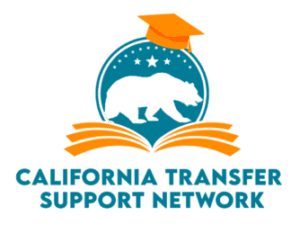If you are interested in transferring from a community college in two years or less, then understanding the importance of articulation agreements is paramount.
Articulation agreements also referred to as transfer agreements, are partnerships between community colleges and universities that reflect the transferability of course equivalencies.
This blog post will look at the basics of articulation agreements, including what they are, how they are created, and what they depict.
We will also showcase the benefits of knowing what articulation agreement you should use to transfer to the institution of your choice and with your declared major.
Related Reading: Advanced Placement (AP) Credit | How Does it Transfer?
Regardless of where you are in your educational journey, the first step to getting back on track is following the articulation agreement between the two institutions you attend and want to attend.
What is an articulation agreement?
The term “articulation” in education refers to formal agreements between partner institutions that review courses for their equivalent between California community colleges and four-year colleges.
A community college and a 4-year institution (public or non-profit) have an articulation agreement. These documents provide an easy and concise pathway between different programs on one platform.

This partnership allows community college students to apply to a higher school without compromising their community college education or current academic status.
A prior learning assessment is conducted for community college students to identify whether the student is at risk of losing credits or does not have enough to fulfill the degree requirements.
For many community college students, the plan is to transfer to a four-year school. Unfortunately, this path can be difficult to navigate.
Prerequisites and tuition prove challenging for many, which often takes longer than anticipated to make the transfer – if they can transfer at all.
Even then, on average, 40% of credits are lost in the process, which puts students behind even further, according to the latest Hechinger Report.
To successfully navigate an articulation agreement, you should start by researching the requirements of the four-year school you plan to transfer to.
Once you have a list of their requirements, look at your community college’s course catalog and compare the two side-by-side. If there are discrepancies, make an appointment with an academic advisor at your community college to help plan your coursework.
It’s also important to note that even if a course is listed as an equivalent, other institutional factors could affect the transferability of the course.
This is why it’s always best to consult an academic advisor before making assumptions about which courses will or will not transfer.
What if my school isn’t listed on an Articulation Agreement?
If your community college doesn’t have an articulation agreement with the four-year school you plan to transfer to, don’t despair. You can still transfer your credits; it will just take a little more work.
The first step is to research the requirements of the four-year school again you plan to transfer to.
Once you have a list of their requirements, look at your community college’s course catalog and compare the two side-by-side.
If there are discrepancies, make an appointment with an academic advisor at your community college to help plan your coursework.

Navigating the articulation agreement will consist of finding the equivalency courses, or section of the agreement, that showcases the credit earned at the university or a four-year college for completing the equivalent course at a community college.
Many institutions in the California state system of higher education that most colleges and universities have agreements with California community colleges that guarantee your transfer admission if you complete the articulation agreement found on ASSIST.
How does an articulation agreement help you reach your goals?
Transfer agreements will help you reach your goal of transferring to several four-year institutions and completing the academic programs required for a bachelor’s degree in various majors.
The basis for transferring colleges and universities is centered around the articulation agreement and, more specifically, in fulfilling the associate degree requirements for the community college so students can transfer with both an associate degree and receive a bachelor’s degree.
This is because most colleges and universities in the California state higher education system have transfer agreements with California community colleges. Completing an articulation agreement will guarantee your admission into one of these institutions.
Moreover, these transfer agreements streamline the transfer process by making it easier for you to identify which courses transfer and which do not, saving you money and time in the long run.
Moreover, students following an articulation agreement could be on the correct pathway to obtaining an associate’s degree. Students from all walks of life and majors, from early childhood education to criminal justice students, are attracted to the opportunities many community colleges offer for a smooth transfer process.
For example, transfer students who want to be English teacher may start their academic journey at a community college because it is more affordable, and they can complete their general education units (GE) without incurring as much debt.
Once transfer students have completed the GE requirements and their lower-division English courses, they can transfer to a four-year university to complete their upper-division English courses, student teaching, and other requirements necessary to obtain their multiple subject teaching credential.
In short, an articulation agreement provides a clear path from community college to a four-year university, saving you a lot of headaches (and money) in the long run.
Suppose you want to major in Political Science, Computer Science, Fine Arts, Occupational Therapy Assistant, or any other discipline. In that case, you must take control of your education and identify the credit transfer requirements.
Why is it important for community college transfer students to be familiar with the articulation agreement?
It is also important for students to be familiar with articulation agreements because fulfilling and completing one can sometimes provide guaranteed admission to one institution or many four-year schools.
Moreover, some organizations, parties, and interested stakeholders provide transfer scholarships to transfer students who successfully transfer and have excellent standing with their current colleges and universities’ registrars.
Students beginning at a community college can speak with an academic advisor or transfer coordinator to seek the articulation agreement relevant to them and find a pathway to completing both an associate degree and a bachelor’s degree.
Why would using an articulation agreement benefit you?
They show a clear path between two community colleges and four-year colleges. The partnership also allows students who have already transferred to a new school to receive a higher credit score and contributes to a seamless transfer process.
Let’s look at how an articulation agreement can be used to reach a higher academic level.
A baccalaureate degree is usually the end goal for students looking at an articulation agreement. Depending on the rigor of the bachelor’s degree program you are looking to transfer to, colleges and universities are not created equal.
In other words, some four-year institutions require students to complete all of the major preparation course requirements to fulfill the graduation requirements of the four-year program.
Conclusion
Overall, a vital component to a smooth transfer process is understanding your way around the articulation agreement. These agreements help save you time and money by providing a clear path from community college to a four-year university.
The transfer agreements serve mainly as guides to aid students in transferring between colleges. Upon transfer to another college, students are guaranteed to receive credits from one school for a specific program.
Moreover, they streamline the transfer process by making it easier for you to identify which courses will transfer over and which will not.
If you plan on transferring from community college to a four-year university, be sure to speak with your community college advisor and the advisors from the four-year university you plan on transferring to.
They will be able to help you navigate the articulation agreement and make sure you are taking the necessary steps to ensure a smooth transfer process.
Best of luck!





